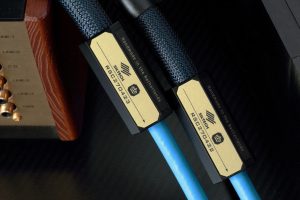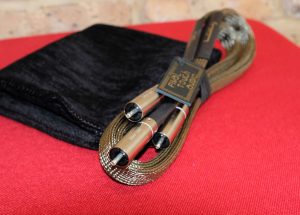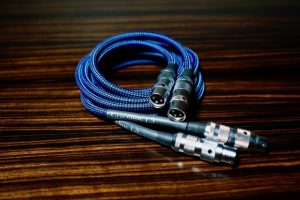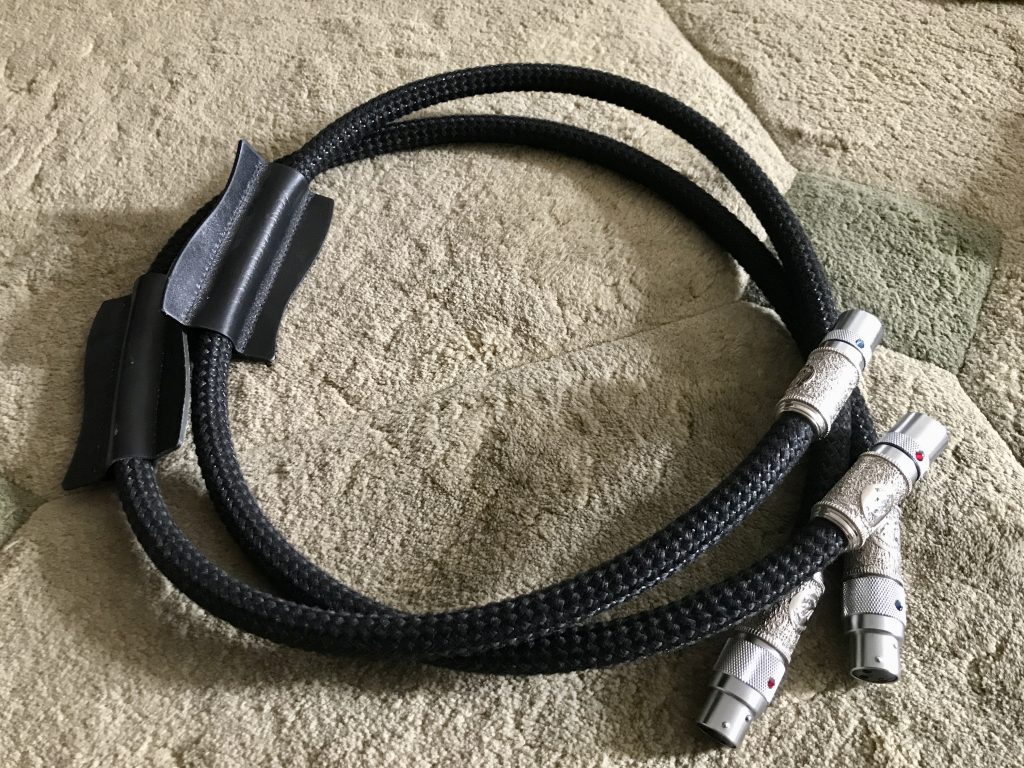
Last year I spent quality time with the Armónico cable from Fono Acustica. The wires left a lingering impression of intense musicality, along with a desire to audition more of their products, including the top-of-the-line Virtuoso model. Felix Avalos, the proprietor of Fono Acustica, teased me along with, "The Virtuoso is a whole different cable in every sense, it is very different from the Armónico in design and sound."
The new year brought two pairs of the XLR interconnect. At first glance, I was a little disconcerted, because the Virtuoso's appearance—color scheme, outer sheath, terminations—bore little resemblance to the mid-line Armónico. The two lines look like the products of two different designers.
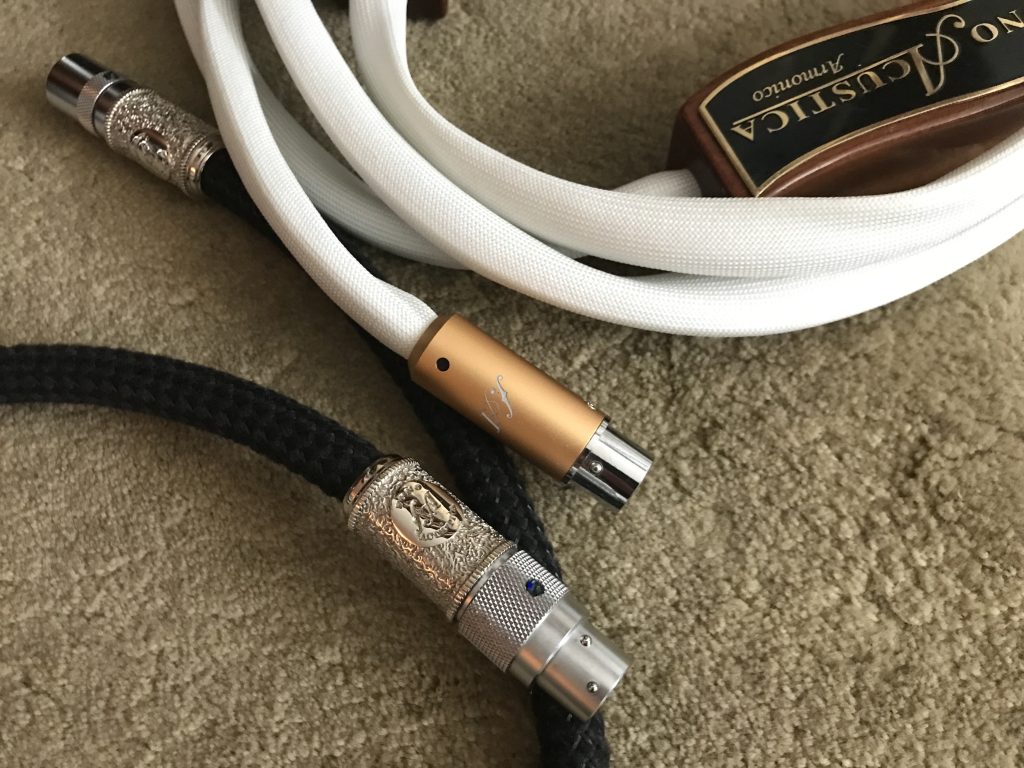
I asked Felix, "What happened that accounts for the Armónico and the Virtuoso being so different? Was there a sonic discovery or some enlightenment in between developing the two products?" He replied, "The Virtuoso is a whole different approach. It was a sonic discovery, yes, but the Armónico did help. Sky is the limit as they say." Hmm…just because I was enamored by the Armónico doesn't mean I'm going to like this one. That would be sad, indeed.
But enough speculation! I recalled my own commandment, Thou Shalt Not Fantasize Pre-Positivo, which dates from my previous life as an analog photographer. After many disappointments, I forced myself to exercise restraint and not speculate about what was on film still in the camera until it was developed and printed. Half a dozen such hard-earned commandments were tacked up around my darkroom.
I read what reviews I could find poking around the web. They all talk about the Virtuoso's richly developed sound and add the caveat that it could be over-baked for some. That is true. The Virtuoso does not skimp on the calories, going well beyond the daily diet. But count us among the exceptions, for we never considered it overdone. Our take is: finally, here's one that gets it right.
How the Public Consumes Live Music - Amplified vs. Acoustic
Have you ever been to a jazz concert and noticed what happens when the tenor sax or trumpet player backs away from the microphone? Or maybe attended a classical concert employing amplification (an experience I don't recommend and would not willingly repeat). As soon as you put a mic in front of an instrument its sound is altered; the sonic attributes change, plus some information is lost. This is one of the least remarked upon but highly significant differences in how the public consumes live music. A majority of the time it involves some sort of amplification. It is even likely that amplified sound is the goal many audiophiles are striving for in their sound rooms. This is what they have in mind when they judge how close reproduced comes to "live."
Moving to the next link in the chain, let's look at the recording. For argument's sake, let's generously assume a CD has captured as much as 95% of what went down at the live event. (Consider that the standard Red Book CD has a density of 16-bit/44kHz. Then consider how much more info is available on 24-bit/96kHz, let alone DSD. There's always more. Analog has its own lossy aspects…We can never attain 100%.)
Then it's processed through the home HiFi system, which is no better than putting the signal through a mic and its associated electronics. What comes out is an approximation and a reduction of what went in. Let's be generous again and suppose that with careful selection of gear and attention to installation, the rig can playback as much as 95% of what's on the CD. This theoretical, best-case scenario will have a summed deficit of 10%, and it's downhill from there for the average "good sounding system." That's why so many of these rigs seem lossy to me, even though it's quite likely most people will be impressed. Many audio manufacturers may share this target as well, because that is all they need to deliver in a product destined for the general marketplace.
And it's not just wires and components: tweaks, stands, and platforms—all can be guilty of a loss of delicate details if they over-damp or apply excessive grip.
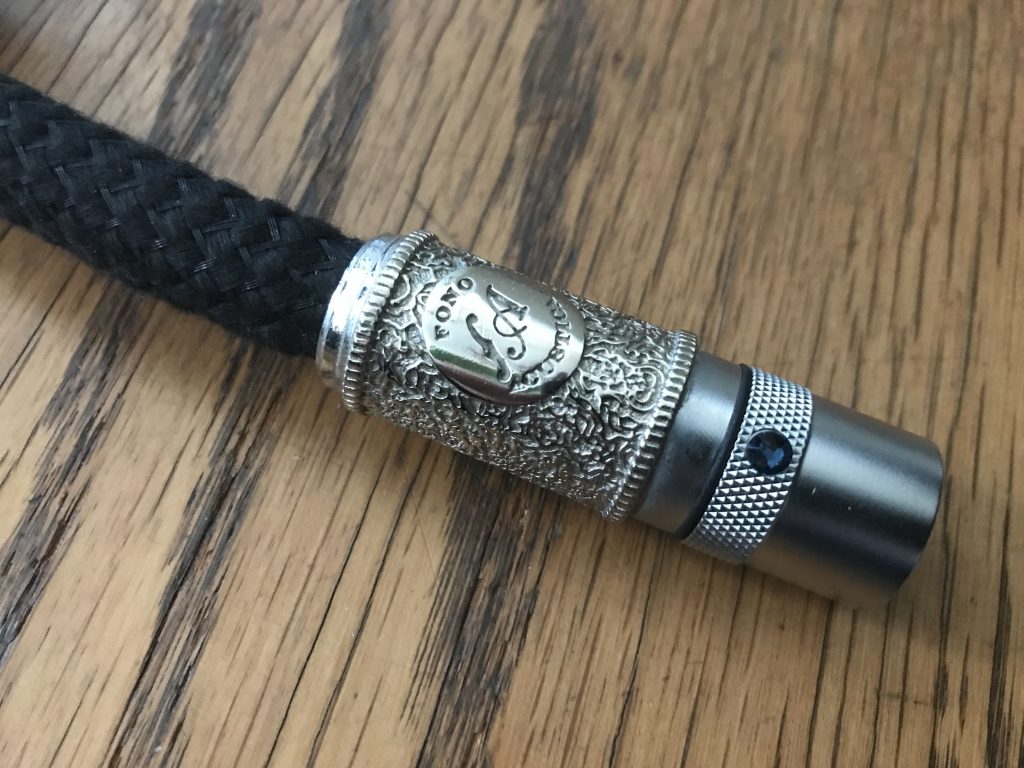
I'm Writing this for the 10%
The missing 10% is the difference between acoustic and amplified. For the subset of audiophiles who appreciate the difference, the quest is to find products that chip away at the deficit. This is a time consuming and generally expensive pursuit—these products are not cheap—but not always, like the Marigo Isolation Platforms I wrote about recently. In that review, I used the Bohuslav Martinů Violin Concerto No. 2, with Isabelle Faust, soloist (harmonia mundi), to describe the sort of things that live in the 10%. It will again serve our purposes to demonstrate what the Virtuoso interconnect brings.
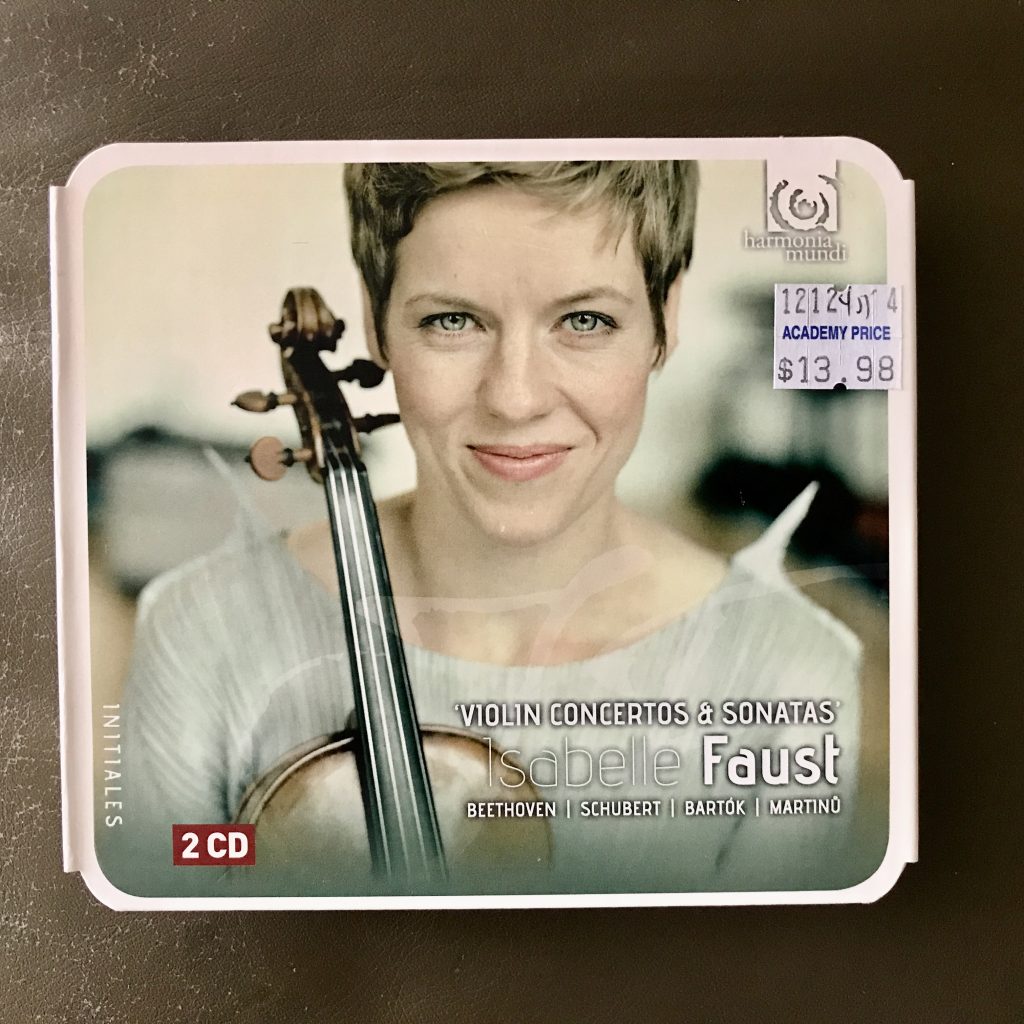
The second movement of the concerto is marked andante moderato. Accordingly, the orchestra proceeds with a relaxed, walking tempo. The solo violin's sustained notes are steady and unwavering, giving the impression that Isabelle is drawing the bow across the strings with steady pressure and not applying vibrato with the left hand. If you think about it, this is highly unlikely.
Just like when you insert one of the Marigo Isolation Platforms, installing a length or two of the Virtuoso IC opens up the sustained notes and unveils small nuances in the violin's volume level hinting at varying bow pressure. Subtle tone variations suggest vibrato is in play. The Virtuosos have an uncanny ability to pull out this kind of musical information, clarifying the inner melodies and the overall shape of the composition. Now you hear the various ways Isabelle is accenting the notes and interpreting the phrase. This effect was noticeable even on CDs that I had relegated to the OUT pile due to uninspired performances. I'm not saying the Virtuoso made everything sound good—nothing can be done to fix bad intonation—but articulation improved, entrances and exits were cleaned up, as if the group had more rehearsal time.
A Matter of Timing
Lynn immediately honed in on timing being the Virtuosos secret sauce. (Timing, the "T" in PRaT, is the combination of ingredients that gets your toe a-tapping.) The Virtuoso were particularly good at maintaining each instrument's coherence when multiple voices were active. This implies the cable handled the attack and decay characteristics of all points along the frequency spectrum from bass through treble with equal finesse. For example, if the cable was soft on the bottom or zippy on top, the integrity of the composition would be compromised.
In a similar fashion, this is how a first-rate string quartet achieves a superior performance. While you never lose sight of each instrument, at the same time you are aware of the overall architecture of the piece. It also explains how the Virtuoso (and the Armónico) go about clarifying musical detail, while leaving amusical information in the background.
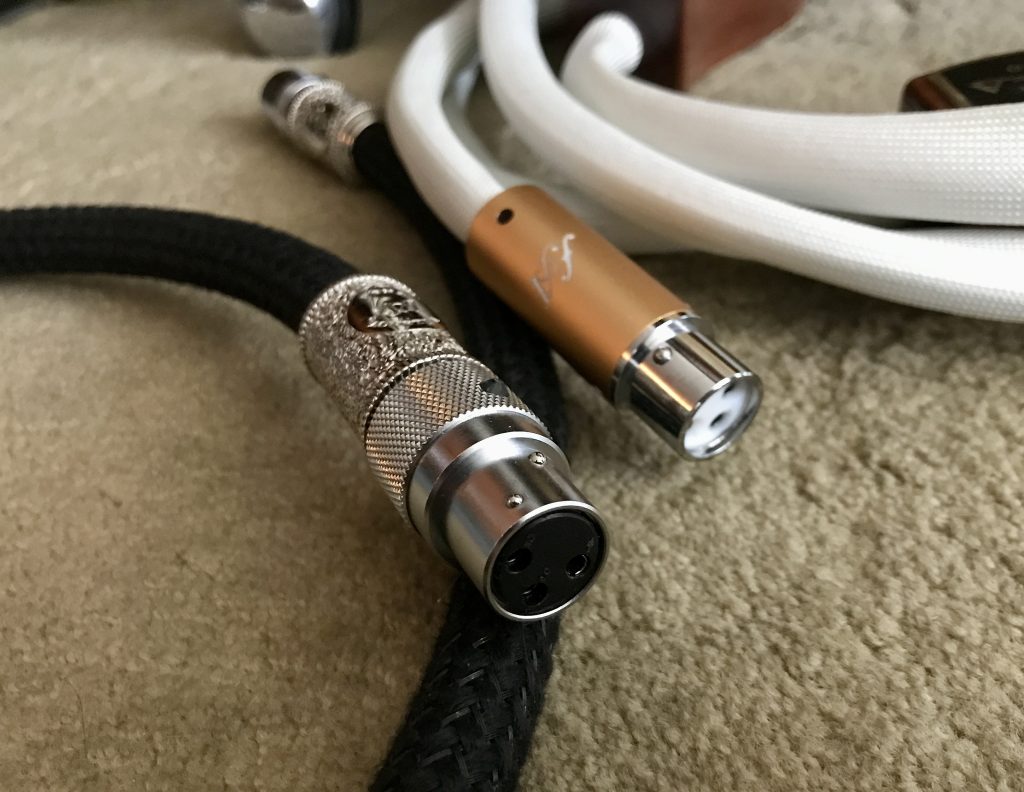
Armónico & Virtuoso
I asked for a sample of the Armónico along with the Virtuoso XLR ICs to facilitate a direct comparison, for those who are interested. Felix told me they sounded different—that was an understatement. The Armónico brings warmth, midrange dominance, and long decays. The cable has a lot of bass, but it is a little loose, and there was some contraction in stage dimension noticed in the width. The sound was mostly coming from center stage. Softer passages seemed to have somewhat less vitality than louder ones.
Reinserting the Virtuoso, the instruments were laid out across the room and width was recovered. There's just as much low-end thrust, but the edge is back and so is the grip, giving transients impact and bite. The tonal balance is on the warm side, but not as much as the Armónico, and is less soft. And low volumes play with the same energy as louder ones.
Perhaps the Armónico would have fared better in this comparison if I didn't have FA's Compás Speaker Ground System in line. There is considerable overlap in the sonic attributes of these two products. Each is best in isolation: when they are both in play the doubling up becomes too much. The opposite was true regarding the Compás and the Virtuoso ICs. When both were both in line, each built upon the other, advancing the Virtuosos excellence in every way.
Sound and Performance
What else you need to know: The Virtuoso imbues the timbral palette with hues and colors well beyond the reach of most cables. Healthy amounts of body are distributed across all frequencies, with the bottom being well represented, round, and tuneful. The midrange harbors abundant inner activity; the treble is extended without being prominent or abrasive, and it is sweet. Frequency integration is superb. There is no lack of control, but the grip is never overdone, while transients move fast enough, land with power, and the leading edge is clean. The Virtuoso does what it needs to do, without calling attention to any aspect other than the beauty of sound. I'd have to say, it is expertly voiced—provided you like to dine out rich.
Cosmetics and Design
The aesthetic at play in the Virtuoso again veers off from the mid-line Armónico cable. The Armónico is extremely bendy, with a loose fitting, soft white, oval-shaped covering of large diameter. The large termination barrels are burnished copper color and unembellished. It has an African hardwood damper with the FA logo. The Virtuoso has a woven black cotton outer sheath and decorative black leather damper with the FA logo. The terminations feature unique handcrafted silver collars with a Spanish baroque motif. When viewed in person, it is beautifully done and not as ostentatious as it sounds. The Virtuoso uses Oyaide XLR connectors. Both cables are lightweight and easy to work with.

The following Virtuoso tech description is from the website (lightly edited):
Solid core conductors are drawn in our proprietary silver/gold alloy [with] Teflon insulation in our own air-spaced construction, with an external shield… The conductors are inserted into a silicon sleeve and then wrapped in a cotton mix outer containing conductive filaments that add another layer of shielding.
Conclusion
Many top-tier cables generate audio thrills with dimensional, detailed, impactful sound. But how many deliver something credible of the live acoustic experience? Not many. For the subset of the audiophile population who appreciates the difference between amplified and acoustic, the offerings are limited. This is the target audience for the Virtuoso XLR interconnect from Fono Acustica.
The Virtuoso has the uncanny ability to clarify the inner voices and musical architecture, while keeping incidental, amusical details in the background. The cable's forte is a remarkable variety of timbral color, an expanded palette of hues well beyond most cables. You want to hear how the wood component of an original instrument violin enriches the sound? This is the Virtuoso's specialty, it will detail it with string tone to die for.
The Virtuoso offers a lot of everything, perhaps too much color for some, but not for this listener. So far in my travels, I have to say the Virtuoso is profoundly more engaging than any interconnect I've heard previously. It is a beautiful achievement—congrats, Felix!
Virtuoso XLR Interconnect
Retail: €16,600.00 / $17,903/m
Armónico XLR Interconnect
Retail: €6,200.00 / $6,686/m
Fono Acustica
















